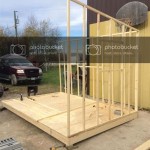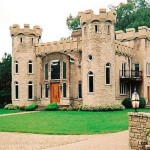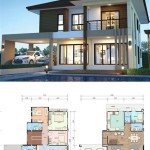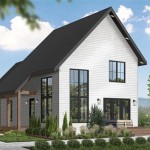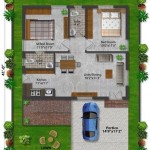Floor Plan Of A Roman Village
Roman villages, essential building blocks of the Roman Empire, showcase a fascinating blend of pragmatic design and social organization. Unlike planned Roman cities, villages typically evolved organically, their layout influenced by topography, agricultural needs, and local traditions. Understanding the typical floor plan of a Roman village reveals valuable insights into the daily lives, economic activities, and social structures of the people who inhabited them.
Roman villages, referred to in Latin as *vici*, served primarily as agricultural centers, supporting the larger urban populations. They varied significantly in size, ranging from small hamlets of a few families to larger settlements resembling small towns. Their floor plans, therefore, were not standardized but adapted to the specific conditions of each locality. Despite this variability, certain common features and building types characterized most Roman villages. Analyzing these elements provides a general understanding of the typical layout of such settlements.
Key Point 1: The Central Role of Agriculture and Infrastructure
Agriculture dictated the organization and infrastructure of a Roman village. The surrounding fields, carefully cultivated for grain, vegetables, and fruit, formed the economic backbone. Access to water was crucial for both irrigation and domestic use. Villages were often located near rivers, springs, or constructed aqueducts. The floor plan reflected this agricultural emphasis through several key features.
The *villa rustica*, a type of Roman farmhouse, served as both a dwelling and a center for agricultural processing. These structures often included areas for storage of grain (granaries), pressing olives or grapes (pressing rooms), and housing livestock (stables). Depending on the size and prosperity of the village, multiple *villae rusticae* could be present. Their location within the village varied; some could be integrated within the residential areas, while others were situated on the outskirts, closer to the fields.
Roads and pathways were essential for connecting the village to nearby towns, markets, and other settlements. These roads facilitated the transport of agricultural goods and allowed for trade and communication. The main roads were usually constructed of packed gravel or stone, providing durable surfaces for carts and wagons. Smaller pathways branched off from the main roads, providing access to individual dwellings and fields. The layout of these transportation routes directly impacted the overall floor plan of the village, influencing the location of buildings and the flow of movement within the community.
Water management was another crucial aspect of village infrastructure. Wells and cisterns provided domestic water supplies, while irrigation canals directed water to the fields. In some villages, especially those located in drier regions, sophisticated irrigation systems were developed. These systems often involved the construction of dams, reservoirs, and canals, which required careful planning and engineering. The presence of such infrastructure significantly shaped the layout of the village, dictating the location of fields and the distribution of settlements along the water sources.
Key Point 2: Residential Areas and Social Hierarchy
The residential areas of a Roman village reflected the social hierarchy and economic status of its inhabitants. Although Roman villages were generally more egalitarian than urban centers, differences in wealth and social standing were still evident in the size and quality of housing.
The most common type of dwelling was the simple farmhouse, typically consisting of one or two rooms. These dwellings were constructed using locally available materials, such as mud brick, stone, or wood. The size and construction quality of these farmhouses varied depending on the resources of the family. Poorer villagers might have lived in small, rudimentary structures, while wealthier farmers occupied larger, more substantial dwellings.
In addition to farmhouses, some villages might have included more elaborate residences for the local elite, such as landowners or administrators. These dwellings, resembling smaller versions of urban houses, often featured interior courtyards, multiple rooms, and decorative elements. They were typically located in more prominent areas of the village, reflecting the owner's social status. The existence of such residences indicated a degree of social stratification within the village community.
The layout of the residential areas also reflected community organization. Houses were often clustered together in groups, forming neighborhoods or hamlets. These clusters might be based on kinship ties or occupational groups. Open spaces, such as small plazas or courtyards, provided communal areas for gathering and social interaction. The organization of these residential areas highlights the importance of community and social cohesion in Roman village life.
Furthermore, evidence of workshops and craft production could be found interspersed within the residential areas. Blacksmiths, potters, and other artisans often lived and worked within the village, providing essential goods and services to the community. Their workshops were typically located near their homes, reflecting the close integration of work and domestic life in Roman villages. The presence of these workshops indicates the economic self-sufficiency and diverse activities within the village community.
Key Point 3: Religious and Communal Structures
While primarily focused on agriculture and daily life, Roman villages also included structures dedicated to religious practices and communal gatherings. These structures, although often smaller and less elaborate than those found in urban centers, played an essential role in shaping the social and spiritual life of the village.
Small shrines or temples dedicated to local deities were common features in Roman villages. These shrines often honored agricultural gods and goddesses, reflecting the importance of farming in the village economy and people’s belief in divine influence over their harvests. The shrines could be simple altars or small structures housing statues of the deities. The location of these shrines within the village varied, but they were often situated in prominent areas, such as near crossroads or in the center of the community. Regular offerings and rituals were performed at these shrines, fostering a sense of religious identity and community spirit.
Some villages also had communal buildings, such as meeting halls or marketplaces. These structures provided spaces for villagers to gather for civic meetings, religious festivals, or trading activities. The size and complexity of these structures depended on the size and wealth of the village. Larger villages might have had dedicated marketplaces with stalls and shops, while smaller villages might have utilized open spaces for trading activities. The presence of these communal buildings indicates the level of social organization and economic activity within the village.
Fortifications, such as walls or ditches, were sometimes constructed around villages, particularly those located in frontier regions or areas prone to conflict. These fortifications provided protection against raids and attacks, ensuring the safety of the villagers and their property. The design and construction of these fortifications varied depending on the available resources and the perceived threat. Some villages were surrounded by simple earthen walls, while others had more elaborate stone fortifications with towers and gates. The presence of fortifications reflects the challenges and insecurities faced by some Roman villages, emphasizing the need for self-defense and community solidarity.
In summary, the "floor plan" of a Roman village was not a rigid blueprint but a flexible adaptation to local conditions, agricultural needs, and social structures. The interplay between agricultural infrastructure, residential arrangements, and communal spaces created a dynamic and functional environment that supported the daily lives of the villagers and contributed to the economic and social fabric of the Roman Empire. Understanding the typical layout of a Roman village provides valuable insights into the rural economy, social organization, and religious practices of Roman society.

Ancient Roman Villa Floor Plan

The Roman Domus House Architecture And Reconstruction

Roman Villa Floor Plan With Courtyard And Pool

Roman Houses And Villas

Plan Of A Pompeian House
L M I R Roman House Lego Ideas

House Of The Vine Museums Victoria

Seeking Floor Plan Of A Classical Roman Building With 20 To 30 Rooms History Stack Exchange
Stephenson Late Roman Villas And Cognitive Science Architectural Histories

Smarthistory Roman Domestic Architecture The Domus

